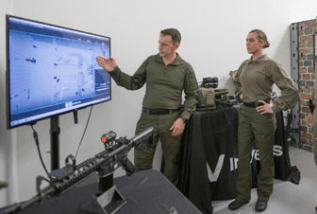Gamification In The General Public Industry
Gamification engages individuals at a psychological level, which is much more powerful than normal transactional engagement techniques.
— Brian Burke, Gamify: How Gamification Motivates Individuals to Do Amazing Points
Federal government training has never ever been a lot more critical or more complex. From active shooter preparedness to cybersecurity readiness, public slaves are significantly phoned call to navigate high-stakes situations where decisions can have life-or-death consequences. Standard training techniques like fixed presentations, thick guidebooks, or irregular workshops usually fall short to involve or prepare individuals for the vibrant challenges they face.
Enter gamification: the application of video game style principles to non-game contexts. In government training, gamification is more than a buzzword; it’s a proven method that boosts engagement, increases knowledge retention, and constructs real-world preparedness. Whether it’s utilizing Enhanced Fact to simulate emergency situations, developing severe games for catastrophe action, or immersing cyber teams in high-risk assault situations, federal government companies are accepting gamified finding out to transform training into a hands-on, high-impact experience.
Let’s check out how 3 prominent examples– DHS’s AR-based energetic shooter training, FEMA’s severe video games, and the ITU’s Cyber Varies– show the power and possibility of gamification in the general public field.
Examples Of Gamification In Federal government
DHS: Augmented Fact For Energetic Shooter Educating
Through the National Urban Protection Innovation Research Laboratory (NUSTL), the U.S. Department of Homeland Safety (DHS) has released Enhanced Fact (AR) systems to support active shooter response training. [1] These systems overlay digital risks and items onto real-world environments, turning a normal classroom or workplace right into a vibrant training school. Students move through physical rooms while replying to virtual simulation, all offered in genuine time with AR headsets or smart phones.

Image from dhs.gov [1]
Why It Works
AR gamifies the environment itself, providing immersive comments loops that imitate real-life stressors. Individuals have to analyze threats, choose, and connect under pressure– just like they would certainly during an actual emergency situation. This hands-on, scenario-based training boosts situational recognition and boosts retention far past traditional lecture-based formats.
The outcome? Very first -responders leave with muscular tissue memory and confidence that fixed drills rarely offer.
FEMA: Serious Gamings For Calamity Action
The Federal Emergency Situation Administration Firm (FEMA) makes use of significant video games– interactive, scenario-based simulations– to prepare public officials for all-natural disasters and complex emergencies. [2] One instance is FEMA’s Emergency Administration Institute’s Virtual Tabletop Exercises (VTTX), which enable individuals to role-play calamity scenarios in an electronic setting. Whether collaborating a cyclone emptying or reacting to a chemical spill, gamers make decisions, assign resources, and adjust to changing problems.
Why It Functions
Significant games enhance systems believing, permitting individuals to see exactly how their choices impact others in genuine time. They also cultivate cross-agency collaboration, considering that gamers should function as teams to address complex obstacles. With integrated racking up, time constraints, and post-game feedback, these simulations create a compelling discovering experience that reflects the complexity of real-life crisis management.
FEMA’s use gamification supports not just preparedness but likewise critical reflection, enabling leaders to examine their methods and boost them before a catastrophe ever strikes.
ITU: Cyber Ranges And International Hazard Action
The International Telecommunication Union (ITU)– a UN firm– uses Cyber Ranges to educate national, local, and international cyber reaction groups on how to challenge digital hazards like ransomware, DDoS assaults, and vital framework hacks. [3] These gamified simulations area participants in a digital setting where they must protect networks, identify vulnerabilities, and consist of assaults under time stress.

Image from itu.int [3]
Why It Works
Cybersecurity hazards progress rapidly, and traditional “checklist” training wants. Cyber Ranges develop high-fidelity simulations that imitate the intricacy of modern cyber warfare. Gamification elements– scoring systems, substitute opponents, real-time occurrence accelerations– drive engagement and build the practical abilities required for modern-day digital support.
What makes ITU’s strategy particularly powerful is its joint international focus. Groups from different nations can engage in common simulations, promoting common standards, quick skill-building, and international cybersecurity resilience.
Why Gamification Issues For Federal Government Training
These instances disclose a bigger fact: gamification isn’t just about fun– it has to do with function. In high-stakes fields where lives, safety, and public trust get on the line, gamification deals:
- Engagement– Interactive circumstances raise learner motivation and minimize cognitive fatigue.
- Retention– Gamified training activates several learning modalities (aesthetic, acoustic, kinesthetic), boosting memory and understanding.
- Feedback– Real-time racking up and debriefs supply actionable understandings for learners and leaders.
- Adaptability– Simulations can be customized for diverse target markets and transforming hazards.
- Partnership– Team-based gameplay cultivates cross-functional control and interaction.
As innovation progresses and public difficulties grow more facility, gamification remains to play an essential role in preparing federal government experts– not just to find out, but to lead in crisis.
From Augmented Reality in law enforcement to disaster action video games and cyber warfare simulations, gamification is no longer a future fad; it’s a current crucial. For companies seeking to build resilient, ready, and agile groups, it’s time to raise the technique with game-based learning.
Referrals:
[1] Enhanced Truth (AR) Training Equipments for First Responders
[2] Serious games in FEMA Regional Action
[3] CyberDrills

